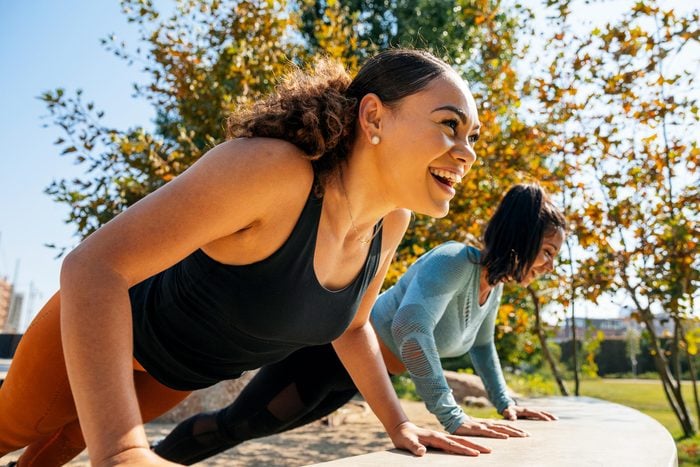These Gentle Exercises May Be the Key to a Longer Life, Say Experts

Exercises designed specifically for this purpose can help improve your range of motion, recover from injuries and even prevent nasty falls as you get older.
The idea of “healthy aging” might remind you to track your cholesterol and mind your heart health, or making sure you’re staying physically active. But, with the Centers for Disease Control and Prevention (CDC) reporting that falls are the leading cause of injury and death from injury in Americans over 65, there’s a type of exercise some trainers say we should all be doing now.
Mobility exercises are gaining popularity, and rightfully so: the Cleveland Clinic says these exercises that designed to simply help you move about better, for longer, can lessen your risk of falling. But what are mobility exercises, how can you try them…and are they right for everyone? The Healthy @Reader’s Digest spoke with Len Glassman, CPT, CHN a health and fitness professional and author, who broke all this down.
What are mobility exercises?
“‘Mobility’ refers to the ability of a joint to move actively or passively,” Glassman says. “Active mobility involves moving your joints freely through your muscular-skeletal system. Passive mobility utilizes an outside factor, such the floor or another person, to apply.”
Glassman says most anyone can give mobility exercises a whirl, but some people may experience limiting factors such as what he calls “rigid bone structures” and “age-related changes to bone, cartilage and scar tissue.” Before you begin any new exercise regimen, it’s always a good idea to speak with your licensed healthcare provider. And, if you want to try the moves Glassman describes below, a certified personal trainer may be able to help you get started.
What are the benefits of improved mobility?
Glassman says the benefits of mobility training go beyond helping you age better. “Dynamic warm-ups that go through various motion patterns (think leg and arm circles, torso rotations and deep body weight squats) can increase synovial fluid inside the joint capsule, which cushions the ends of bones and reduces friction when you move your joints and improve blood flow circulation,” he says. “Mobility training essentially prepares our bodies for the stress of more intense training.”
Glassman adds that everyone can benefit from mobility training—there are just some facts that are worth keeping in mind. For example, because women tend to have a wider range of motion in their joints, they’re more prone to ankle sprains or other foot injuries. So Glassman says active females in particular can benefit from mobility exercises to reduce joint-related injuries.
How do you train for improved mobility?
“Dynamic warm-up drills that serve to protect the joint surfaces” are the best way to boost your mobility, Glassman suggests. He recommends hip circles (stand on one leg, using a countertop for support, and gently swing the opposite leg in circles out to the side), heel-to-toe walking, and arm circles and arm swings as a few easy mobility exercises to incorporate in your workout warm-ups.
He adds that mobility exercises are helpful because they target an important daily function—basic movement. But, people should be “aware of and avoid joint limiting factors, such as when a joint feels ‘stuck,’ ‘pinching’ or is painful.” When that happens, he says you shouldn’t push yourself: ease off whatever you were doing, and listen to your body.

No comments